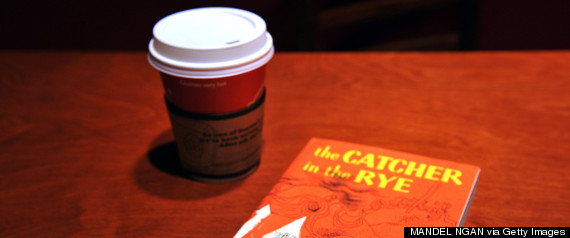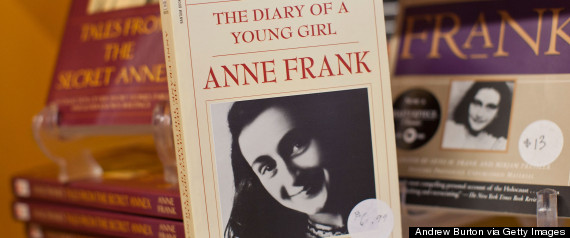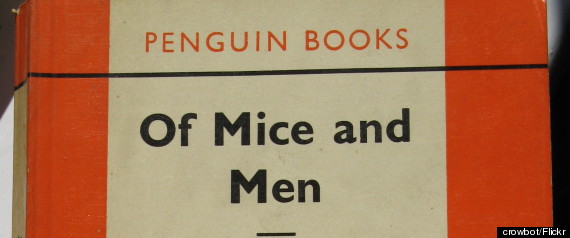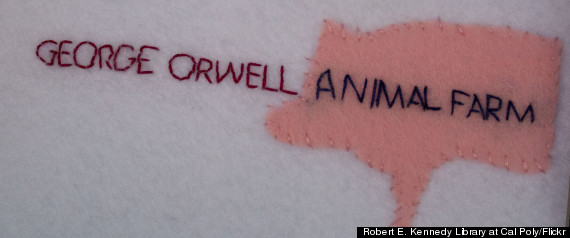That didn’t mean that we ever lacked reading material. There was plenty of fiction perfectly suitable for kids age 12 to 18. Some of these novels had been written with young people in mind (Treasure Island, for one). Many featured adolescent main characters. Most, however, had been intended for adult readers. Yet they resonated with younger audiences. As my friend Erin Martineau said the other day on my crowd-sourcing Facebook post, “I read Catcher in the Rye when I was nine or 10, and then every year after.”
So, for my list of the 10 books that shaped the boomer generation growing up, let’s begin there.
The Catcher in the Rye by J.D. Salinger

In brief: Holden Caulfield has a couple of bad days. Suspended from his posh Pennsylvania prep school, this adolescent walking-puddle-of-angst sloshes around New York City and spends some time in a seedy hotel until he can go home (so his parents won’t be immediately aware of his school troubles). He sees a few old friends, meets people who take advantage of him, tries to pay a prostitute to just talk to him (for which he gets punched in the stomach by her pimp), and, among other misadventures, brings his younger sister for a ride on the carousel in Central Park where he has a revelation about the meaning of life.
Adolescent attraction: Ask any 16 year old, life is meaningless — at least sometimes. And Holden talks, and talks, and talks, and seemed to get inside our heads.
Lasting lesson: Holden Caulfield verified our hopes that other teens were as messed up as we felt on bad days; in fact, some had it worse. But our thoughts and feelings were important, even if adults dismissed us, so said Salinger.
Little Women by Louisa May Alcott

In brief: Four sisters living in mid-19th century Massachusetts encounter life’s problems and life’s joys. Thus, they pass over the divide from being “little” (almost) women to true womanhood.
Adolescent attraction: Well, there are the love stories, which all work out well, and the sentimental but moving death scene involving the lovely Beth. For some reason, teenage boys also get caught up in this book — maybe because there are a few “little men” whose story lines entwine with those of the March girls.
Lasting lesson: Follow your heart. Even Amy, the youngest and most self-absorbed sister, ends up rejecting a wealthy suitor in favor of the man she loves.
Anne Frank: The Diary of a Young Girl by Anne Frank

In brief: While hiding in Amsterdam from the Nazis and living in close quarters with another family, Anne records her day-to-day experiences along with her thoughts and musings about life. Remarkably, Anne is genuinely optimistic about life and people. (Her father edited out some of the darker portions for the original publication. This material was restored in 1995.)
Adolescent attraction: I imagine no teen picks up this book without knowing that Anne’s family was betrayed and shipped to a Nazi death camp, where she died just a few weeks before liberation. And yet the girl writing the diary seems so normal, so likeable. Even Justin Bieber, in one of the most cringe-worthy comments ever made by a narcissistic teen idol, expressed his wish that they could have been “friends.”
Lasting lesson: People can live through a lot of stuff. Writing helps.
To Kill a Mockingbird by Harper Lee

In brief: Six-year-old Scout Finch recounts how her father, the widower-lawyer Atticus Finch, defends an African- American man who has been accused of rape. Atticus’ inner nobility garners him the respect of the black community, but his two children still suffer at the hands of bigoted whites.
Adolescent attraction: Just about everything in this book works against its being a stalwart of teen bookshelves. The narrator is six years old at the beginning (nine at the end), but she talks like an adult. The hero is her middle-aged father. The mystery involves an aging reclusive neighbor. And yet, this beloved novel is perfect for teens. Maybe it’s the vividness of the writing and the tension of the plot — along with a certain sophistication and a story accessible to teens — that account for its continuing popularity. It has never been out of print.
Lasting lesson: From Atticus we learn (as do his children) that we must do what is right. From Scout and her brother we learn that adults can be cruel (like Bob Ewell) but also immensely kind (like Boo Radley).
Pride and Prejudice by Jane Austen

In brief: Elizabeth and her older sister, Jane, find love and happiness in early 19th -century England.
Adolescent attraction: The scene where Darcy and Elizabeth accidently meet at Pemberley (Darcy’s manor house) is probably the most romantic piece of writing ever. The humorous side-plots, ridiculous characters and witty ripostes are easily understood and appreciated by teens.
Lasting lesson: Each time I read this novel (and I must have read it 15 times — and I’ve seen every movie and TV version as well), I am struck by how much time and emotional energy people waste by not being forthright in the first place. I am also reminded that scoundrels can con you, foolish people are everywhere, but good-hearted souls will stand by you in trying times.
Of Mice and Men by John Steinbeck

In brief: Two migrant workers bear the emotional and economic brunt of the Depression as they look for work and try to pursue their dream of owning their own farm.
Adolescent attraction: The vivid characterizations of the intellectually-challenged Lennie and the practical George make them people teens would want to talk to and wish to help. Curley’s wife’s provocative sensuality lends a sexual tension, which fascinates teens.
Lasting lesson: Steinbeck thrillingly includes the reader in on the secret of the power of friendship. He enables the teenage reader to feel smart that he or she “gets” what George feels and why he does what he does.
Fahrenheit 451 by Ray Bradbury

In brief: In a dystopian future, books have been banned. Instead of putting out fires, “firemen” torch anything in print, and at the beginning of the book, an old woman who wouldn’t leave her burning home. Fireman Guy Montag steals a book from the old lady’s house. It turns out that he has actually been pilfering books for a while, hiding them in his air-conditioning duct. Finally betrayed by his wife and her friends, Montag is made to burn his own home, but also kills the fire chief. He escapes and finds a community of people who memorize books because they have faith there will come a time when people are eager for true knowledge and beauty.
Adolescent attraction: Teens love dystopian fiction, and the one teenage character, an intellectual rebel, helps Montag question the policy of book burning. The story is scary and believable.
Lasting lesson: In the end, there will be goodness and truth (which is actually the lesson of all Bradbury’s science fiction).
The Great Gatsby by F. Scott Fitzgerald

In brief: Nick Carraway moves into a small home next to the lavish estate belonging to Jay Gatsby, a mysterious millionaire. In Nick’s social circle are his wealthy cousin, Daisy, and her husband, Tom, who is having an extra-marital affair with a woman named Myrtle. Nick eventually meets Gatsby, discovers the millionaire is in love with Daisy and orchestrates a meeting between the two. Tom grows jealous, and Daisy ends up killing her husband’s mistress in an auto accident. Gatsby takes the blame and is shot and killed by Myrtle’s husband. Nothing seems to touch Daisy and Tom. Disgusted by the empty lives of the rich, Nick decides to move home to the Midwest.
Adolescent attraction: There is love. There is betrayal. There is an amazing story. There is someone who discovers that so much around him is a bunch of bullroar, something teenagers know instinctively.
Lasting lesson: A powerful novel never leaves you.
The Lord of the Flies by William Golding

In brief: A group of British boys survive a plane crash on a remote Pacific Island. At first, three boys — Ralph, Jack and Simon — form a kind of ruling troika that helps preserve order. But things quickly break down, and the savage children turn on each other.
Adolescent attraction: It’s a horrible adventure, but it’s still an adventure. Teens who finish the book inevitably ask themselves which camp they would have joined and whether they would have discarded their humanity to survive.
Lasting lesson: How easily humans can discard the trappings of civilization!
Animal Farm by George Orwell

In brief: The animals on a farm revolt and drive off the irresponsible farmer. At first they are guided by “the seven principles of animalism,” and everyone is happy. After a while, though, one of the leader pigs (named Napoleon) takes over and changes the rules: All animals are equal, but now some are more equal than others. As the years go by, the pigs begin to walk upright, carry whips and in all respects resemble humans, their former oppressors.
Adolescent attraction: Welcome to dystopia, again, one of the literary domains beloved by teens. Young readers understand Orwell’s allegory and feel intelligent, which they should.
Lasting lesson: Things aren’t fair. Those in charge will perpetuate the imbalance. Don’t you forget it!
